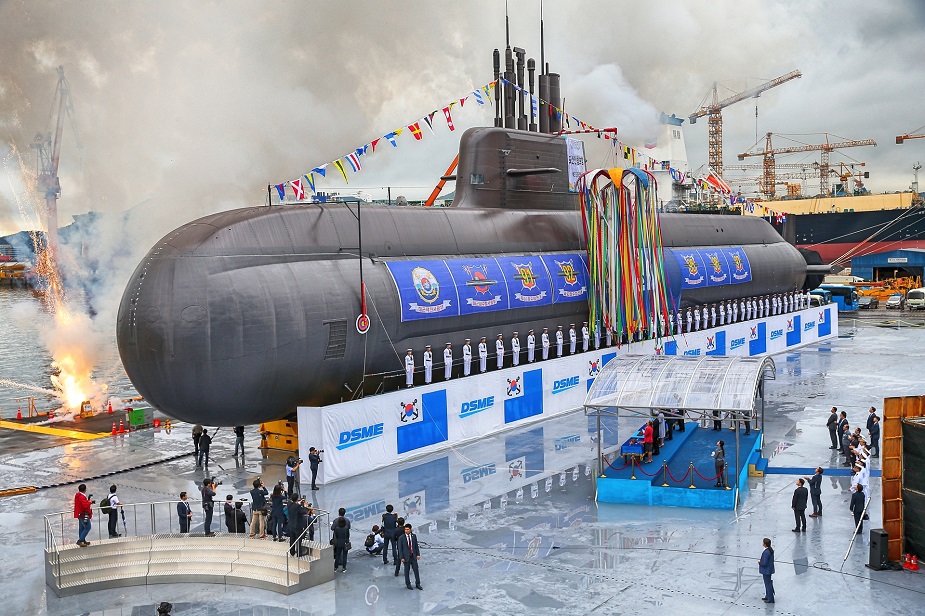South Korea, all about the first Kss-III submarine

What changes for South Korea with the first Kss-III submarine. An in-depth study by Giovanni Martinelli
The confirmation arrived last August 16 from the same South Korean Navy (Republic of Korea Navy, or ROKN) that the first submarine of the new KSS-III class has begun to be used on a mission in the ranks of this Navy, is a doubly important data. In the first place because, precisely, it marks the beginning of the operational life of a new class of diving boats.
But the second aspect is certainly not far behind. The Dosan Ahn Changho (this is the name of the platform in question) is in fact the first conventional propulsion submarine in the world, and fully operational, to be also equipped with the ability to launch ballistic missiles (Submarine Launched Ballistic Missile or SLBM) .
A primacy therefore not "trivial", which demonstrates on the one hand the capabilities of the South Korean industry (shipbuilding, but not only) and, on the other, the will of ROKN itself to become a protagonist in the increasingly complex (and dangerous) scenario of the region that revolves around the Pacific Ocean and its many seas in which it divides. And this not only in function of deterrence against the "brother-enemy" represented by North Korea but also with respect to that "cumbersome" neighbor that is China.
There was talk of Seoul's industrial and technological capabilities; well, the development of the South Korean diving component ends up becoming one of the most effective examples. The first ever submarine to enter service in the South Korean Navy dates back to just about 30 years ago. The Jang Bongo, which will later give its name to the 9-unit class also known as KSS-I, is a simple local version of the Type 209 developed by the German shipyard Howaldtswerke-Deutsche Werft (now part of the ThyssenKrupp Marine Systems, TKMS group) .
This program therefore not only allows South Korea to enter this field but, at the same time, allows it to begin to acquire more knowledge from a manufacturing / technological point of view. Knowledge that will be put to good use with the next "step", namely the other 9 submarines of the Son Won-Il class (or KSS-II). Once again, the starting point is a German product, namely the Type 214 also by TKMS ; but on this occasion their construction under license takes place entirely in the South Korean shipyards.
And so we arrive today and this new class of boats precisely known as the Dosan Ahn Changho or KSS-III class; the final evolution, as the 9 submarines that will make it up become the first entirely designed and built locally. With their construction which, as already happened before, is then distributed between the 2 major South Korean shipyards: Daewoo Shipbuilding & Marine Engineering (DSME) and Hyundai Heavy Industries (HHI).
But these new KSS-IIIs differ from the previous ones in another element; the growth in size and (consequently) the similar growth in operational capabilities. Their length will in fact be 83.5 meters, the width of 9.6 and the displacement underwater of about 3,800 tons. In short, "oceanic" boats.
In addition to a very complete and advanced suite of sensors, the KSS-III also have a “state of the art” propulsion system. On the one hand, the traditional scheme based on diesel generators that recharge the batteries; on the other hand, however, there is also an Air Independent Propulsion (AIP) system on fuel cells, intended to increase the autonomy of the submarine under water.
In line with all modern creations then the performance framework; with a maximum diving speed estimated at 20 knots and a range (at much lower speeds) of approximately 10,000 miles, in any case compared to an operating time of around 20 days.
But as we said, the other crucial feature is the ability to launch ballistic missiles; in fact, in addition to the 6 533 mm torpedo tubes for the launch of Tiger Shark bombs, the KSS-IIIs also have 6 Vertical Launch Systems (VLS) for the launch of Hyunmoo 4-4 type ballistic missiles, whose range is estimated at about 500 km. No one else in the world has such a capability yet; apart from the North Korean Sinpo submarine which, however, is in fact a kind of quasi-experimental platform.
And although it cannot be compared to that of nuclear-powered boats, with ballistic missiles precisely equipped with nuclear warheads, nevertheless in this way Seoul acquires some form of deterrence towards potential (or real ) enemies. In particular, evidently, against Pyongyang.
But the interesting aspects of these KSS-IIIs do not end there; after the first 3 units of the first batch (or "Batch"), the construction of another 3 is already planned as part of a second "Batch", followed by 3 of the third and last. All this in the context of an evolutionary process that, for example, will lead to embarking on the boats of the Batch-II the most modern and capable lithium-ion batteries (instead of the current lead-acid); but, above all, with the last lot that provides for the lengthening of the hull to accommodate another 4 VLS, thus reaching 10 in total.
All while in the background Seoul continues to reflect on what could be an epochal turning point; the transition to nuclear propulsion for its submarines. A passage that, beyond some resistance, in the end could even become obligatory in the light of the increasingly "unbridled" race for nuclear-powered submarines in the Indo-Pacific.
This is a machine translation from Italian language of a post published on Start Magazine at the URL https://www.startmag.it/smartcity/corea-del-sud-tutto-sul-primo-sottomarino-kss-iii/ on Tue, 23 Aug 2022 05:45:36 +0000.
